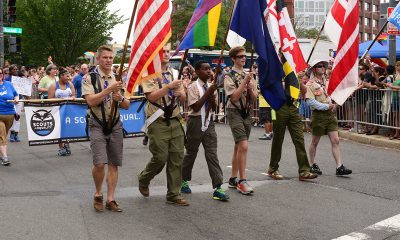a&e features
SPORTS ISSUE 2019: Trans women face many hurdles in quest to compete fairly
Testosterone levels, hormones, evolving policies, anti-trans bias among complicating factors
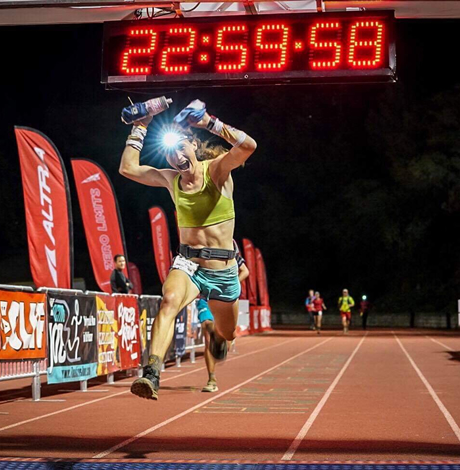
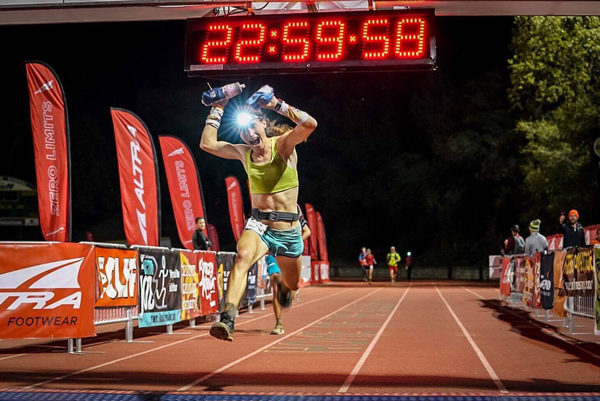
LGBT issues have never been easy — marriage, military service, AIDS, you name it, no gain came without a fight. But if, as is commonly posited, trans rights lag a good 10 or more years behind gay and lesbian advances, perhaps the thorniest issue of all is fair competition for trans women and their cis women opponents, in both recreational and elite sport.
Imagine that women’s sports had never become “a thing” and all adults competed against each other. In figure skating, for example, only three women have landed quad jumps in competition, yet no male singles skater today can be remotely competitive without multiple quads in his arsenal (Nathan Chen landed six at the 2018 Olympics yet failed to medal).
Yes, Billie Jean King (a lesbian) famously beat Bobby Riggs in the 1973 “Battle of the Sexes” in tennis, but she was 29 and he was 55. What would happen if Michael Phelps and Katie Ledecky (swimming) or Novak Djokovic and Serena Williams (tennis) were to face off in the pool or on the court?
Perhaps more realistically, what would happen if Chen, Phelps or Djokovic came out as trans, opted out of hormone replacement therapy and competed as women? Some LGBT advocates say even suggesting such a scenario is transphobic or, at best, displays a gross misunderstanding of the issue. But it’s a question being asked by many.
The International Olympic Committee changed its policy in early 2016 to allow trans women to compete provided they demonstrate their testosterone level has been below a certain level for at least one year prior to their first competition. It supplants the previous 2003 policy that required both gender reassignment surgery and two years of hormone therapy (trans men are allowed to compete without restriction).
Chris Mosier, a trans male athlete and creator of transathlete.com, a resource site for trans sports advocacy at all levels, says the debate has been unfair and overheated.
“We’ve had several Olympic games since the policy has been in place for trans athletes,” says the 38-year-old Mosier, who in 2015 became the first openly trans man to make a Men’s U.S. National Team when he qualified for the Spring Duathlon team. “We’re talking something like 50,000 Olympians have passed through and not a single trans athlete or single trans woman has participated. The fears people have and the stereotypes and misconceptions they’re putting out there about trans women dominating sports just simply haven’t happened.”
That’s also the argument of trans activist/author Brynn Tannehill whose book “Everything You Ever Wanted to Know About Trans” came out in 2018. She points out that there has not been a single trans athlete dominator since the Olympic policy change or since the NCAA changed its policy to allow trans people to compete sans surgery in 2011. She claims a year of testosterone removal is “sufficient to remove competitive advantage.”
But some cis athletes have balked at getting beaten by trans women competitors. And they’re not just complaining — some are taking legal action. Elsewhere, governing bodies in various sports at all levels are either facing or have faced challenges in how to keep their eligibility policies current and trans-inclusive. That collides with the widely held trans argument that what a trans person has done or not done by way of hormone replacement therapy or gender reassignment surgery is a personal matter that doesn’t make them more or less a woman or man than those at other stages of transition.
Others say trans bias is something impossible to ignore or downplay because it’s so rampant.
“There will always be people who will say a trans female athlete is cheating when she wins or when she doesn’t win, say, ‘She just didn’t try hard enough,’” says gay sports filmmaker David McFarland (“Alone in the Game”). “People are looking for a reason to discriminate against trans people in sport, that’s a given.”
Connecticut controversy
Selina Soule, a 16-year-old runner at Glastonbury High School in Glastonbury, Conn., is frustrated. She says she’s suffered because trans competitors in her conference — Terry Miller of Bloomfield High and Andraya Yearwood of Cromwell High — have been allowed to compete no questions asked against she and her fellow cis women runners.
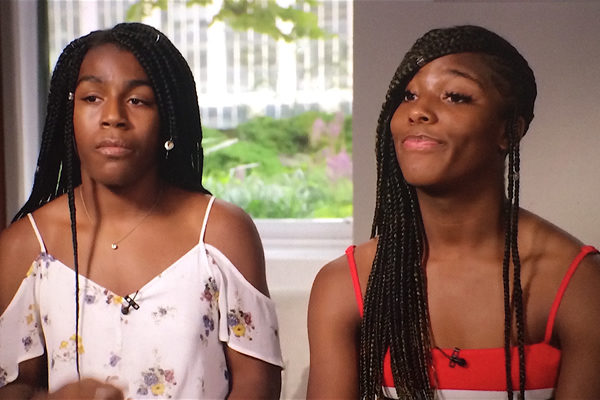
Miller won the State Open 200-meter title for the second straight year in 2019 and won the Class S titles in the 100 and 200, as well as the New England 200-meter championship. Yearwood, who is also transgender, finished third in the 100 meters in Class S and fourth in the 100 in the State Open.
Subsequently Soule wasn’t able to compete in the New England regional Championships where she would have been seen by college scouts. Miller and Yearwood have won 15 women’s state championships since the Connecticut Interscholastic Athletic Conference (CFAC) changed its policy to allow them to compete as women. Conference leaders say they’re simply following state law.
“The CIAC is committed to providing transgender student athletes with equal opportunities to participate in CIAC athletic programs consistent with their gender identity,” its guidebook reads. Connecticut is one of 19 states that has similar laws.
“I am very happy for these athletes and I fully support them for being true to themselves and having the courage to do what they believe in,” Soule said in a Fox News interview. “But in athletics, it’s an entirely different situation. It’s scientifically proven that males are built to be physically stronger than females. It’s unfair to put someone who is biologically a male who has not undergone anything in terms of hormone therapy against cisgender girls.”
Miller and Yearwood have declined to state publicly what, if any, hormone therapy or testosterone suppression — more on that later — they have undergone.
Soule told the Wall Street Journal the experience has been demoralizing.
“It’s just really frustrating and heartbreaking because we all train extremely hard to shave off just fractions of a second off of our time and these athletes can do half the amount of work that we do and it doesn’t matter,” she said. “We have no chance of winning.”
“It’s definitely a complicated issue,” Soule’s mother Bianca, told the Blade in a brief phone interview. “You have to compete based on the physical abilities you were born with, if you want to call it that. That’s why we separate the two genders. If there were no differences, there would never have been a women’s sports. Unfortunately our trans girls are caught in the middle. The rule is the problem. I tried to contact our Connecticut association to try to look into it, even meet with one of the trans girls’ fathers to try to understand and come up with a solution but we were met with only shut doors. The frustrating part has been the refusal of the athletic bodies to even consider and listen to our side of it.”
Yearwood and Miller issued statements through the ACLU. “I will continue to fight for all trans people to compete and participate consistent with (whom) we are,” Miller wrote. “There is a long history of excluding black girls from sport and policing our bodies. I am a runner and I will keep running and keep fighting for my existence, my community and my rights.”
“I will never stop running,” Yearwood wrote. “I hope that the next generation of trans youth doesn’t have to fight the fights that I have. I hope they can be celebrated when they succeed, not demonized.”
“It is heartbreaking to see yet another attack on trans youth for simply participating in activities alongside their peers,” Chase Strangio, ACLU staff attorney added. “Discrimination on the basis of sex extends to trans people. Girls who are transgender are girls.”
A legal group called Alliance Defending Freedom (it calls itself a “conservative Christian nonprofit”) filed a complaint in June with the U.S. Department of Education Office of Civil Rights on behalf of Soule and two of her teammates claiming they have “been negatively impacted by the policy.”
“One of these male athletes now holds 10 records inside the state of Connecticut that were once held by 10 individual girls established over the course of about a 20-year period so it’s fundamentally unfair to allow biological males to step into women’s sports and frankly dominate them and take away opportunities not just to medal, but to be on the podium and advance to the next level of competition and even compete for scholarships for young women like Selena,” Christiana Holcomb, an Alliance Defending Freedom attorney, told Tucker Carlson on Fox News.

“It’s grotesque and insane and it hurts women and girls,” Carlson said on the broadcast.
The issue is especially acute among high school athletes because students are often just figuring out whom they are, how they identify and are less likely to have time logged living fully transitioned lives.
Dawn Stacey Ennis, managing editor of OutSports and a trans woman, says the trans-girls-bumping-cis-girls-off-the-medal-stand argument is misleading because college coaches recruiting look at time, not placement.
“They don’t care who placed first, second or third — all colleges look at and what every coach has told me is that the time is what matters because time is immutable, you can’t change that. It doesn’t matter if you ran against a trans person or not,” Ennis says.
She also says Soule and her representatives aren’t being totally forthcoming.
“I talked to her mother and watched the video and when she said (Selina) didn’t get to qualify for the event in Boston, she sort of fibbed a little bit. She didn’t qualify in that event, but she did qualify in another event. But, of course, that’s not a good headline. It’s much better to say, ‘I didn’t get to go because of these girls.’ … They have to make the trans girls out to be the boogyemen because somebody else has to be responsible for her losing. It has to be someone else’s fault, but that’s not what sports is about.”
Tennis legend Martina Navratilova, a lesbian, was heavily criticized for a Sunday Times op-ed she wrote in February arguing trans women should not be allowed to compete against cis women.
“It’s insane and it’s cheating,” she wrote. “I am happy to address a transgender woman in whatever form she prefers, but I would not be happy to compete against her. It would not be fair. … To put the argument at its most basic: a man can decide to be female, take hormones if required by whatever sporting organization is concerned, win everything in sight and perhaps earn a small fortune, and then reverse his decision and go back to making babies if he so desires,” she wrote.
She was heavily criticized for her comments, removed from the advisory board of Athlete Ally (an LGBT athlete advocacy group) and called out by trans activists such as cyclist Rachel McKinnon (the first trans woman to win a world track cycling title in Oct., 2018), who called Navratilova’s concern a “wild fantasy worry that is an irrational fear of something that doesn’t happen … transphobia.”
Navratilova wrote of being frustrated with “what seems to be a growing tendency among transgender activists to denounce anyone who argues against them and to label them all as transphobes.”
She backpedaled somewhat, apologizing for using the word “cheating,” but called for a debate on the issue based “not on feeling or emotion but science,” BBC News reported.
How are other sports organizing bodies handling the issue?
Western states solution
One group that’s done about as well as anyone it appears is the Western States 100-Mile Endurance Run whose board members this year adopted a trans-inclusive policy that accepts “a runner’s self-declared gender at registration … at face value,” the New York Times reports.
“If, however, a finisher in the top 10 or among the top three in their age group is challenged, race management may ask the runner for documentation that they have undergone medically supervised hormone treatment for gender transition for at least a year before the race,” the Times reports.
The issue arose last December when Grace Fisher, a trans runner who favors ultradistance competition, was selected through the race’s traditional lottery system for the 100-mile ultramarathon that takes place in the Sierra Nevada Mountains in California every June.
If a trans runner is challenged and it’s upheld by race management, their placement may be bumped but they would be allowed to keep their finisher’s buckle. It ended up not being an issue for Fisher (she came in 20th) but she says she appreciates the care organizers put into their policy.
“They were so concerned about me and wanted to ensure my safety,” says the 38-year-old Hancock, Md., resident, a federal employee with United States Citizenship and Immigration Services. “They went out of their way to welcome me and wish me good luck. … It was quite amazing, but I don’t think the other runners really picked up on it. They just saw me as another female.”
Fisher acknowledges the issue is dicier on the high school level.
“I think we do need more research, but there are so few of us, it’s hard to get more,” she says. “I think personally, and this may not be popular in the trans community, but yeah, the high school situation needs to be looked at more. That’s such a tricky situation because one, they’re teenagers so their hormones are raging whether they’re cis or if they’ve started to transition, they may still have an advantage. I just haven’t seen any science on it so I’m hesitant to state any opinion at this point.”
There’s a bounty of information on the topic available from all kinds of sources, from thorough, balanced studies in popular magazines such as Men’s Health’s March piece “The Truth About Trans Athletes;” to folksy, readable blogs such as “On Transgender Athletes and Performance Advantages” earlier this year at sportsscientists.com; to scholarly research in medical journals such as “Sport and Transgender People: a Systematic Review of the Literature Relating to Sport Participation and Competitive Sport Policies,” published online two years ago on the National Institute of Health website, which studied eight other articles and reviewed 31 sport policies.
The findings were — perhaps surprisingly for some — more trans validating than one might expect.
“In relation to sport-related physical activity, this review found the lack of inclusive and comfortable environments to be the primary barrier to participation for transgender people.” Also, the “lack of inclusive and comfortable environments (is) the primary barrier to participation for transgender people. … transgender people had a mostly negative experience in competitive sports because of the restrictions of the sport’s policy placed on them.”
Researchers also found “no direct or consistent research suggesting transgender female individuals (or male individuals) have an athletic advantage at any stage of their transition (e.g. cross-sex hormones, gender-confirming surgery) and therefore competitive sport policies that place restrictions on transgender people need to be considered and potentially revised.”
The ‘T’ word
A central — but not total — factor in this discussion is testosterone levels.
The hormone, an androgen is produced in both men and women, but not nearly as much in cis women. It affects the body in many ways.
In men, high levels of testosterone are made in the testes. The adrenal glands make much lower levels above the kidneys. Women produce testosterone in both their adrenal glands and ovaries, but testes in men produced much higher rates: in men, it’s 295 to 1,150 nanograms of testosterone per deciliter of blood while the levels in women are usually in the range of 12-61 nanograms per deciliter of blood, according to the New York Times and other medical sites consulted.
Testosterone also builds both skeletal and cardiac muscle and increases the number of red blood cells. The effects are present whether they’re there naturally or introduced. The effects are amplified further among elite athletes and make a huge difference in performance. Male champions in sports across the board are always faster and stronger than records set by women, although it’s not as simple as it may appear at first: researchers have found it has more of an effect in middle-distance races; it could have been less of a factor for Fischer in the Western States 100.
But the connection between testosterone and athletic performance isn’t always an exact science. When researchers measured the T levels of elite athletes from 15 Olympic sports, more than 25 percent of the men were below the level (10 nanomoles per liter) required of trans Olympic women, according to a study from “Clinical Diabetes and Endocrinology” cited in the aforementioned Men’s Health article. Nearly 7 percent had less than 5 nmol/L and there was significant overlap between male and female athletes. Cis male powerlifters had surprisingly low T levels while cis male track and field athletes were higher.
Further complicating matters is the fact that some cis women rarely but occasionally possess unusually high T levels. Caster Semenya, 28, an elite runner and Olympic champion from South Africa, for instance, has been banned from some races. In May, the Court of Arbitration for Sport in Switzerland ruled that women with unusually high T levels (far above the ranges normally seen) cannot compete against other women in some races unless they take drugs to suppress their levels, the New York Times reported.
Men also tend to be on average about 6 inches taller than women. The average U.S. adult male weighs 195 pounds vs. 168 pounds for women. A study from the Applied Physiology journal found that men had an average of 26 pounds more skeletal muscle mass than women and about 40 percent more upper-body and 33 percent more lower-body strength on average.
Fairness factor
So what does fair look like?
Mosier chuckles when asked to ponder the issue with sexism, patriarchy and anti-trans bias taken out of the equation.
“I don’t know what that would look like and I wish I could predict the future,” he says. “But sport is inherently about advantage and that makes people uncomfortable. There are certain advantages a very tall basketball player has. We don’t ask him to chop off a few inches of their height to make a more level playing field. Some people burn lactic acid faster than their competitors. At the 2016 Olympics in Rio, Katie Ledecky, beat her competition by a full pool length but she’s thought of as a once-in-a-lifetime, exceptional athlete but her advantage may be that she is never questioned, but there really needs to be more studies done on what the impact is over time before anyone could start to talk about unfair advantage.”
Not disqualifying certain individuals with extraordinary physical gifts is also commonly used as a rationale for why trans women shouldn’t be punished for physical attributes beyond their control.
“What are they supposed to do, tell these people they can’t compete because their arms are too big or their torsos are too long,” Ennis says. “That’s not fair either. Trans girls may have physical gifts but I would hope those would be advantages that would make cis girls try harder. I don’t think it’s unfair because there are always going to be people who are better than you.”
McFarland agrees.
“It’s an affront to every athlete to be penalized for one’s intrinsic biology,” he says. “Do we tell a really strong female shot putter or discus thrower she’s too strong to compete? Do we have a height cut-off in the NBA? Where would it end?”
But by that argument, why are women’s divisions needed in any sport?
Ennis says no women — cis or trans — want to compete against men. Asking the question, she says, implies skeptics don’t see trans women as true women.
“This idea that some guy’s gonna go put on a wig and a skirt, go dominate the sports world, then go back and start fathering babies, that’s just not what the trans experience is about,” Ennis says.
Mosier says any advantage trans women in theory may have, is negated by the social stigma they endure.
“It has a huge impact on their training and performance,” Mosier says. “People aren’t transitioning to gain a competitive advantage. What they encounter would never offset a gold medal or world championship. They just want to compete. … The footage of some of these track meets and what’s said to the competitors and their parents, its’ really toxic and vile and horrific in so many ways that a young person would have to deal with that lack of understanding.”
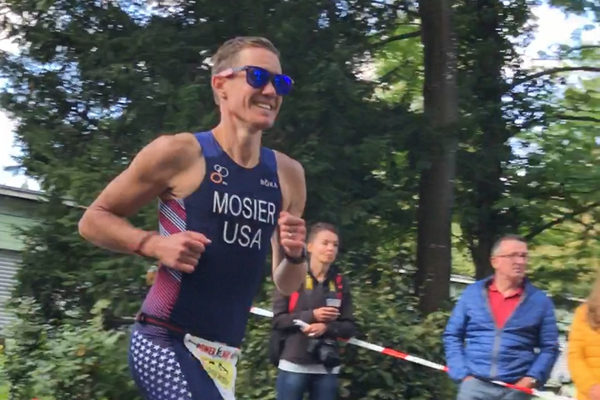
(Photo by Zhen Heinemann; courtesy Mosier)
And while some argue that anyone who’s been through a male puberty will on average retain a physical advantage — testosterone doesn’t vastly impact one’s height or reach — Fisher says even that argument is suspect.
“It’s like having a Mustang with a small engine,” Fisher says. “You still have this big car but it just doesn’t have the engine. We lost a lot of muscle mass, probably more than a fit female, but also a lot more bone mass. The muscle-to-mass ratio is lower,” she says. “I don’t really know if trans women have any advantage. I think it’s questionable.”
As one would expect, there’s huge support for trans athletes — both men and women — among LGBT advocacy groups. But the story changes significantly when you loop other stakeholders into the discussion.
Fallon Fox was the first openly trans athlete in MMA history in a 2012-2014 career that included just a single loss. She encountered substantial transphobia in her groundbreaking career but also questions about the fairness of her bouts. During a 2014 fight against Tamikka Brents, Brents suffered a concussion, orbital bone fracture and required seven staples to her head after the first round, which ended the fight. Brents, a lesbian, said after the fight it wasn’t a fair match.
Brents declined a Blade interview request saying she’d put the issue behind her but said at the time that Fox was far stronger than any other women she’d ever fought in a long MMA career.
Fox dismissed the advantage claim in a guest editorial on an MMA news website saying, “I’m a transgender woman. I deserve equal treatment and respect to other types of women. I feel this is so ridiculously unnecessary and horribly mean spirited.”
Elusive consensus
While it’s understandable that consensus eludes the sports world among the Alliance Defending Freedom, Fox News and the like, it’s still thorny because there’s no consensus either among trans people.
Some believe trans athletes should be able to compete without any medical intervention at all, others believe in a physical barometer to gauge trans eligibility while others say there should be a separate league for trans athletes, not a widely held view because of their small numbers. They mostly agree, however, that participation is essential.
Ennis of OutSports says the fact that trans women haven’t emerged as a dominant force in elite sports and even in high school sports don’t win constantly helps support the general push toward trans inclusion.
“If a study were to come out and say conclusively that trans women are physically unbeatable by cisgender women and every cis woman lost every time, I would throw in my hat and say, ‘That’s it, we can’t do it.’ But the facts aren’t in. Cis women do beat trans women. Not every single time, but there’s not one sport in which trans women totally dominate. These two (Connecticut) high school girls are winning competitions, but they don’t win every single one they’re in.”
“No trans person is trying to participate for personal gain,” McFarland says. “They just want to do it in a healthy manner. This idea that people are transitioning just to dominate is something that critics continually get wrong and this ungrounded fear of trans people, that they’ll come in and take over, that’s really the dictionary definition of transphobia. … The current science and data reveals it’s a nonsense argument.”
a&e features
Looking back at the 10 biggest A&E stories of 2025
‘Wicked,’ Lady Gaga’s new era, ‘Sexy’ Bailey and more

Although 2025 was a year marked by countless attacks on trans rights and political setbacks, the year also saw brilliant queer artists continuing to create art. From Cannes and Sundance Award winners now vying for Oscar consideration to pop icons entering new stages of their careers, queer people persevered to tell their stories through different media.
With the state of the world so uncertain, perhaps there’s no more vital time to celebrate our wins, as seen through some of this year’s top pop culture moments. While there’s no collection of 10 stories that fully encompass “the most important” news, here are some events that got the gays going:
10. ‘Mysterious Gaze of the Flamingo’ wins big at Cannes

The Cannes Film Festival has become a crucial start for films hoping to make their way to the Oscars, and first-time director Diego Céspedes won the top Un Certain Regard prize for his intimate western “The Mysterious Gaze of the Flamingo.” The film is set in the ‘80s and is intended as an allegory for the AIDS epidemic. Seeing a film that unpacks vital queer history win one of the most coveted awards at Cannes has been a huge point of pride in the independent filmmaking community.
Since the film bowed at Cannes, it has been selected as Chile’s Oscar entry in the Best International Feature race. Speaking with The Blade during the film’s AFI Fest run in October, Céspedes said: At first, I was kind of scared to have this campaign position in the times that we’re living [in] here. But at the same time, I think the Oscars mean a huge platform — a huge platform for art and politics.”
9. ‘The Last of Us’ returns for an even gayer season 2
While the first season of The Last of Us gave us one of TV’s most heartbreaking queer love stories in the episode “Long, Long Time,” Season 2 doubled down on its commitment to queer storytelling with the blossoming relationship between Ellie (Bella Ramsey) and Dina (Isabela Merced). The show expanded on the pair’s relationship in the original video game, making it perhaps the central dynamic to the entire season. That unfortunately came with more homophobic backlash on the internet, but those who checked out all the episodes saw a tender relationship form amid the show’s post-apocalyptic, often violent backdrop. For their performance, Ramsey was once again nominated for an Emmy, but Merced deserved just as much awards attention.
8. ‘Emilia Pérez’ sparks controversy
Jacques Audiard’s genre-bending trans musical “Emilia Pérez” proved to be an awards season juggernaut this time last year, winning the Golden Globe for Best Musical/Comedy. But when the lead star Karla Sofia Gascón’s racist, sexist, and homophobic old tweets resurfaced, the film’s Oscar campaign became a tough sell, especially after Netflix had tried so hard to sell Emilia Pérez as the “progressive” film to vote for. Mind you, the film had already received significant backlash from LGBTQ+ audiences and the Mexican community for its stereotypical and reductive portrayals, but the Gascón controversy made what was originally just social media backlash impossible to ignore. The only person who seemed to come out of the whole debacle unscathed was Zoe Saldaña, who won the Oscar for Best Supporting Actress over Ariana Grande.
7. ‘Sorry, Baby’ establishes Eva Victor as major talent
Back in January at the Sundance Film Festival, Eva Victor (known by many for her brand of sketch comedy) premiered their directorial debut “Sorry, Baby” to rave reviews, even winning the Waldo Salt Screening Award. Victor shadowed Jane Schoenbrun on the set of “I Saw the TV Glow,” and seeing Victor come into their own and establish such a strong voice immediately made them one of independent cinema’s most exciting new voices. A memorable scene in the film sees the main character, Agnes (played by Victor), struggling to check a box for male or female, just one example of how naturally queerness is woven into the fabric of the story.
Most recently, Victor was nominated for a Golden Globe for her performance in the film, and she’s represented in a category alongside Jennifer Lawrence (“Die My Love”), Jessie Buckley (“Hamnet”), Julia Roberts (“After the Hunt”), Renate Reinsve (“Sentimental Value”) and Tessa Thompson (“Hedda”). The film also received four Independent Spirit Award nominations overall.
6. Paul Reubens comes out in posthumous doc

While Paul Reubens never publicly came out as gay before passing away in 2023, the two-part documentary “Pee-wee as Himself” premiered back in May on HBO Max, giving the legendary comedian a chance to posthumously open up to the world. Directed by Matt Wolf, the documentary explores how Reubens found his alter ego Pee-Wee Herman and why he kept his private life private.
The documentary won an Emmy in the Outstanding Documentary or Nonfiction Special category and remains one of the most critically acclaimed titles of the year with a 100% Rotten Tomatoes score. Also worth noting, the National Geographic documentary Sally told the posthumous coming out story of Sally Ride through the help of her long-time partner, Tam O’Shaughnessy.
5. Lady Gaga releases ‘Mayhem’
Lady Gaga entered a new phase of her musical career with the release of Mayhem, her seventh album to date. From the frenzy-inducing pop hit Abracadabra to the memorable Bruno Mars duet featured on “Die With a Smile,” seeing Gaga return to her roots and make an album for the most die-hard of fans was especially rewarding after the underwhelming film releases of “House of Gucci” and “Joker: Folie à Deux.” Gaga has been touring with The Mayhem Ball since July, her first arena tour since 2018. She even extended her tour into 2026 with more North American dates, so the party isn’t stopping anytime soon. And Gaga is even set to make an appearance next May in “The Devil Wears Prada 2.”
4. Cynthia Erivo, Ariana Grande perform at the Oscars

While “Wicked: For Good” didn’t quite reach the heights of the first film, we will forever have Cynthia Erivo and Ariana Grande’s breathtaking live performance that opened the 97th Academy Awards. The pair sang a rendition of “Over the Rainbow,” “Home,” and “Defying Gravity,” paying proper homage to the original 1939 “Wizard of Oz.” Even non-Wicked fans can’t deny how magical and brilliantly staged this performance was. With both Erivo and Grande up for acting Oscars last year, they’re hoping to repeat success and make history with consecutive nominations. Either way, let’s hope there’s another live performance in the making, especially with two new original songs (The Girl in the Bubble and No Place Like Home) in the mix.
3. Indya Moore speaks out against Ryan Murphy
Indya Moore has consistently used social media as a platform for activism, and in September, posted a 30-minute Instagram live speaking out against “Pose” co-creator Ryan Murphy. Moore claimed that Murphy wasn’t being a true activist for trans people. “Ryan Murphy, we need you to do more. You need to address the racism, the violence, and the targeting of people on your productions, Ryan Murphy. You do need to make sure trans people are paid equally. Yes, Janet did the right thing,” Moore said. Murphy was also back in the headlines this year for the critically panned “All’s Fair” and the controversial “Monster: The Ed Gein Story” starring Laurie Metcalf and Charlie Hunnam.
2. Cole Escola wins Tony for Best Leading Actor
Few pop culture moments this year brought us together more than Cole Escola winning a Tony award for “Oh, Mary!” the Broadway show they created, wrote and starred in (we love a triple threat!) Escola made history by becoming the first nonbinary person to win a Tony in the leading actor category, and seeing them excitedly rush to the stage wearing a Bernadette Peters-inspired gown instantly became a viral social media moment.
The cherry on top of Escola’s major moment is the recent news that they are writing a Miss Piggy movie with Jennifer Lawrence and Emma Stone producing — news that also broke the internet for the better. We cannot wait!
1. Jonathan Bailey makes gay history as ‘Sexiest Man Alive’

The same year as his on-screen roles in blockbusters “Jurassic World Rebirth” and “Wicked: For Good,” Jonathan Bailey made history as the first openly gay man to be named People magazine’s “Sexiest Man Alive.” The fact that it took 40 years for an openly gay man to earn the title is a signifier of how far we still have to go with queer representation, and seeing Bailey celebrated is just one small step in the right direction.
“There’s so many people that want to do brilliant stuff who feel like they can’t,” he told PEOPLE, “and I know the LGBT sector is under immense threat at the moment. So it’s been amazing to meet people who have the expertise and see potential that I could have only dreamed of.” In 2024, Bailey founded the charity titled The Shameless Fund, which raises money for LGBTQ+ organizations.
a&e features
Your guide to D.C.’s queer New Year’s Eve parties
Ring in 2026 with drag, leather, Champagne, and more

With Christmas in the rear view mirror, we can turn our attention to ringing in a much-anticipated New Year with a slew of local LGBTQ parties. Here’s what’s on tap.
Pitchers
This spacious Adams Morgan bar is hosting the “Pitchers’ Perfect New Year’s Eve.” There will be a midnight Champagne toast, the ball drop on the big screens, and no cover, all night long. The bar doesn’t close until 4 a.m., and the kitchen will be open late (though not until close). All five floors will be open for the party, and party favors are promised.
Trade
D.C.’s hottest bar/club combo is leaning into the Shark motif with its NYE party, “Feeding Frenzy.” The party is a “glitterati-infused Naughty-cal New Year’s Even in the Shark Tank, where the boats are churning and the sharks are circling.” Trade also boasts no cover charge, with doors opening at 5 p.m. and the aforementioned Shark Tank opening at 9 p.m.. Four DJs will be spread across the two spaces; midnight hostess is played by Vagenesis and the two sea sirens sensuously calling are Anathema and Justin Williams.
Number Nine
While Trade will have two DJs as part of one party, Number Nine will host two separate parties, one on each floor. The first floor is classic Number Nine, a more casual-style event with the countdown on TVs and a Champagne midnight toast. There will be no cover and doors open at 5 p.m. Upstairs will be hosted by Capital Sapphics for its second annual NYE gathering. Tickets (about $50) include a midnight Champagne toast, curated drink menu, sapphic DJ set by Rijak, and tarot readings by Yooji.
Crush
Crush will kick off NYE with a free drag bingo at 8 p.m. for the early birds. Post-bingo, there will be a cover for the rest of the evening, featuring two DJs. The cover ($20 limited pre-sale that includes line skip until 11 p.m.; $25 at the door after 9 p.m.) includes one free N/A or Crush, a Champagne toast, and party favors (“the legal kind”). More details on Eventbrite.
Bunker
This subterranean lair is hosting a NYE party entitled “Frosted & Fur: Aspen After Dark New Year’s Eve Celebration.” Arriety from Rupaul Season 15 is set to host, with International DJ Alex Lo. Doors open at 9 p.m. and close at 3 p.m.; there is a midnight Champagne toast. Cover is $25, plus an optional $99 all-you-can-drink package.
District Eagle
This leather-focused bar is hosting “Bulge” for its NYE party. Each District Eagle floor will have its own music and vibe. Doors run from 7 p.m.-3 a.m. and cover is $15. There will be a Champagne toast at midnight, as well as drink specials during the event.
Kiki, Shakiki
Kiki and its new sister bar program Shakiki (in the old Shakers space) will have the same type of party on New Year’s Eve. Both bars open their doors at 5 p.m. and stay open until closing time. Both will offer a Champagne toast at midnight. At Kiki, DJ Vodkatrina will play; at Shakiki, it’ll be DJ Alex Love. Kiki keeps the party going on New Year’s Day, opening at 2 p.m., to celebrate Kiki’s fourth anniversary. There will be a drag show at 6 p.m. and an early 2000s dance party 4-8 p.m.
Spark
This bar and its new menu of alcoholic and twin N/A drinks will host a NYE party with music by DJ Emerald Fox. Given this menu, there will be a complimentary toast at midnight, guests can choose either sparkling wine with or without alcohol. No cover, but Spark is also offering optional wristbands at the door for $35 open bar 11 p.m.-1 a.m. (mid-shelf liquor & all NA drinks).
a&e features
Local, last-minute holiday gift ideas
Celebrate the season while supporting area businesses

The DowntownDC Holiday Market is bustling. Union Station is decked out with its annual Christmas tree. Washingtonians have wrapped their houses and apartment balconies with festive lights and holiday decorations. The holiday season is here. And with stockings to fill and empty space under the tree, Washington’s local shops and artists have plenty to offer.
Show your LGBTQ and D.C. pride with the Washington Blade’s annual holiday gift guide.
To embrace the holiday buzz: The Blanco Nwèl cocktail from Alchy Cocktails. This Caribbean eggnog is one of Alchy Cocktail’s seasonal holiday cocktails. The flavor profile is similar to coquito, a traditional Puerto Rican Christmas drink with a coconut base. As a queer and Caribbean-owned business, Alchy Cocktails has been based out of Washington since 2021. Blanco Nwèl is available in both cocktail ($24) and mocktail ($12) online and at a variety of holiday markets, including the Tingey Plaza Holiday Market, the Flea Market at Eastern Market, Union Station’s Main Hall Holiday Market, and more. ($24)
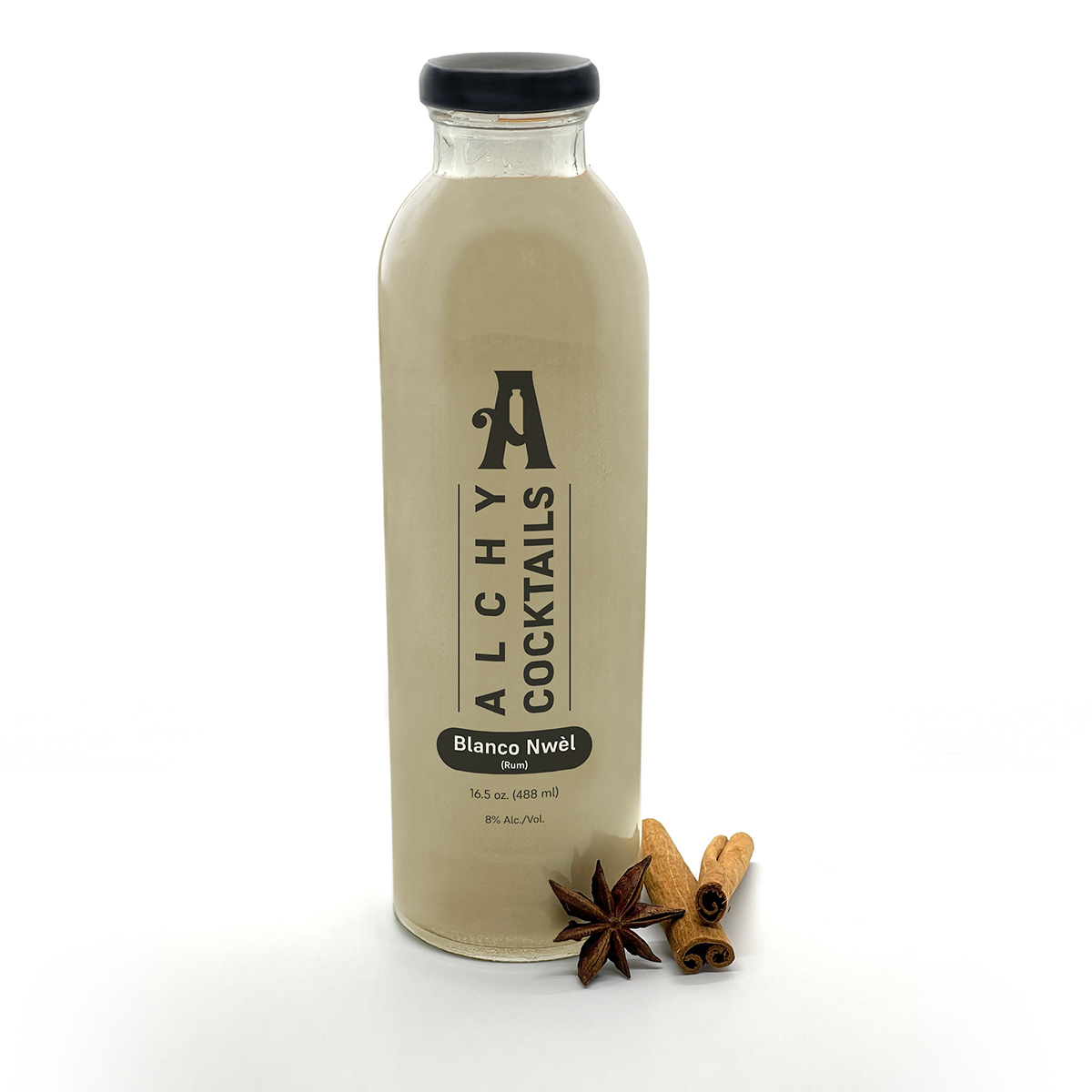
A spicy bite: Gordy’s Cajun Okra from Salt and Sundry. These spicy, tangy pickles pull on Southern Cajun-style flavors, packing a punch with paprika, cayenne, and more. Gordy’s is an LGBTQ-owned and Washington-based brand, making this gift an opportunity to support a local LGBTQ business straight from the jar. This pantry staple is available on Salt & Sundry’s website and at its locations in Union Market, Logan Circle, and its Georgetown holiday pop-up store. ($14)
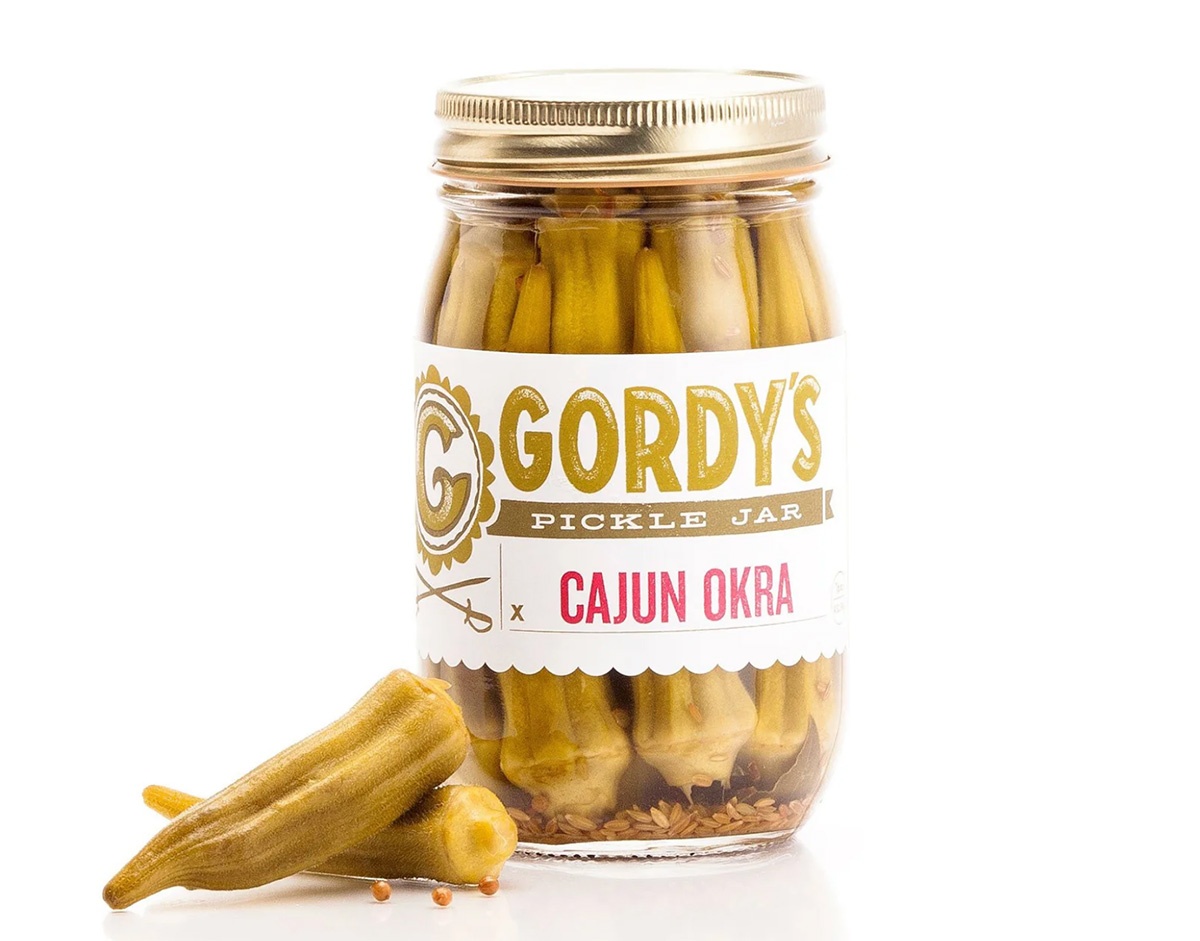

To celebrate Washington pride: The DC Landmark Tote Bag from The Neighborgoods. Native Washingtonians, visitors, friends and family alike will find something to love about this Washington-themed tote bag. Food trucks, the 9:30 Club, the Metro logo and pandas from the National Zoo are just some of the city’s landmarks depicted across the tote in a red, white, and blue color palette. The tote is a part of the DC Landmarks collection, which donates 10 percent of its sales to the American Civil Liberties Union. The Neighborgoods itself is a local, woman-owned business built out of a passion for screen-printing in 2013. The 100 percent cotton canvas tote is for sale online or at the DowntownDC Holiday Market. ($22)
To give friends and family their flowers: The Flowers Bandana from All Very Goods. This 100 percent cotton bandana was designed in Washington and hand printed in India. Its uniqueness comes in being covered with the faces of Black women, representing a “love letter to all women but especially Black women,” according to All Very Goods. The Black woman-owned and operated business, based out of Northwest Washington, has a mission to celebrate diversity and representation through its products. The bandana intends to give Black women their “flowers.” The Flowers bandana is available for purchase online. ($24)
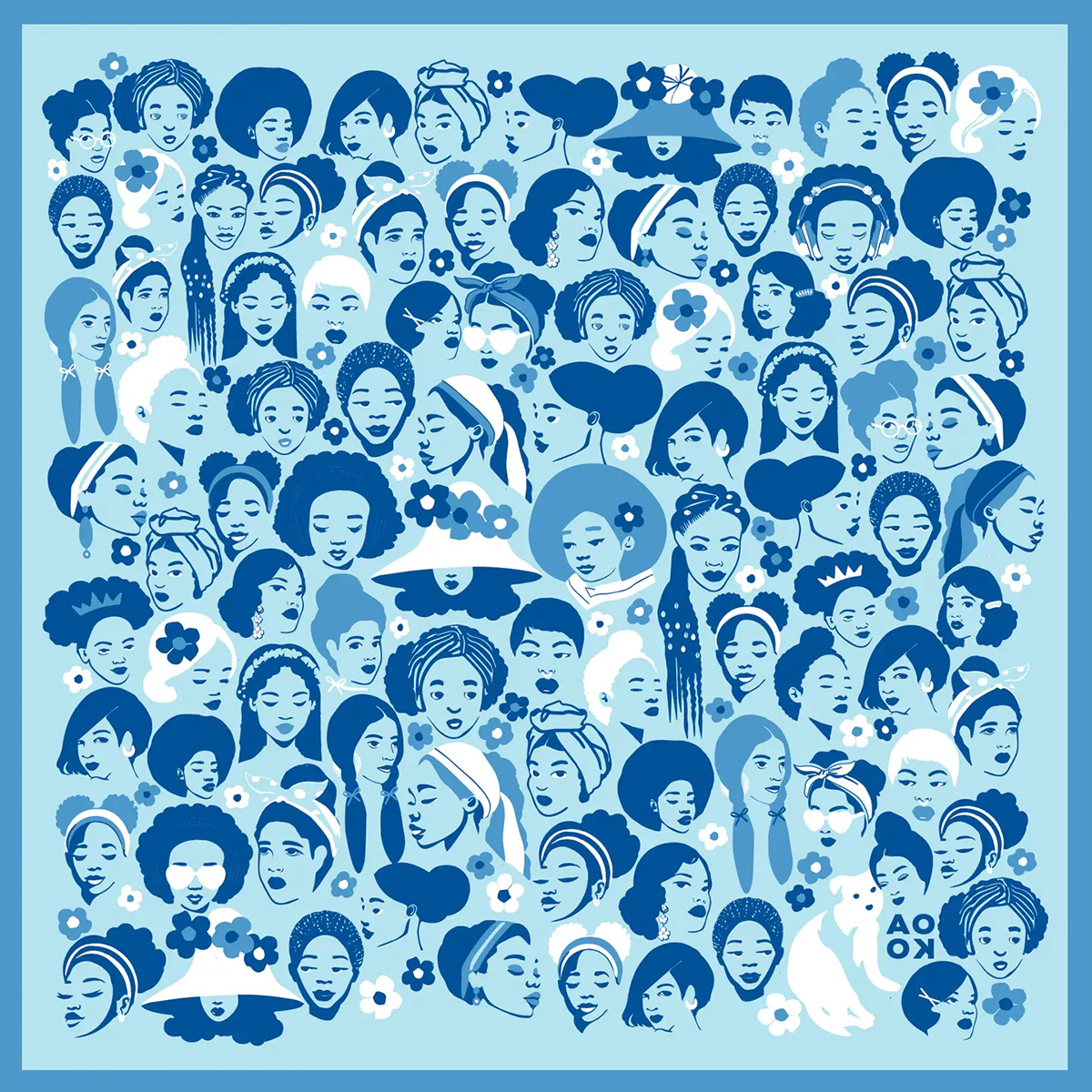
To unlock culinary creativity: The Curious Chef Gift Collection from Each Peach Market. This customizable collection of kitchen oddities — ranging from tinned fish to chili oil — is a quirky gift for the most inventive chefs. The collection is available in a Standard Santa, Extra Goodies and Super Holiday Size for up to $165. The Washington-based market, founded in 2013, permits customers to make the collection special by specifying what unique ingredients are packaged, including products made by local or LGBTQ brands. Each Peach Market offers assembly and pick up in-person at its Mount Pleasant shop and also offers local delivery and nationwide shipping via its website. ($85)

To give a touch of sweetness: The DC Landmark Chocolate Covered Oreo Holiday Cookies from Capital Candy Jar. Wrapped in a festive red bow, this box of nine cookies embraces love for Washington and the holiday season in one. Among the dark and milk chocolate covered cookies are images of the U.S. Capitol, the White House, the Lincoln Memorial, the Jefferson Memorial and festive hollies. The treat, packaged in a Hill East facility just a few blocks from the Capitol, is available for purchase online and at the DowntownDC Holiday Market. ($23.95)


To celebrate queer gaming: Thirsty Sword Lesbians from Labyrinth Games & Puzzles. This roleplaying game embraces lesbian culture by unlocking a world of swords, romance, and battle. Ideal for group settings, the book presents a system of world building and character identities that are best brought to life by creative minds. Labyrinth, which has been a local Washington business for more than 15 years, celebrates non-digital fun through games and puzzles that connect the community. This gift is offered online and at Labyrinth’s Capitol Hill location. ($29.99)
To make a bold statement: The “Resist” T-shirt from Propper Topper. This locally screen-printed black tee features the Washington flag designed within a raised fist, symbolizing both Washington pride, and political resistance. The shirt is made exclusively by Propper Topper, a local Washington business that evolved from a hat shop to a gift store since opening in 1990. The tri-blend unisex shirt is available both for pickup at Propper Topper’s Cathedral Heights location and shipping via the online site. ($32)
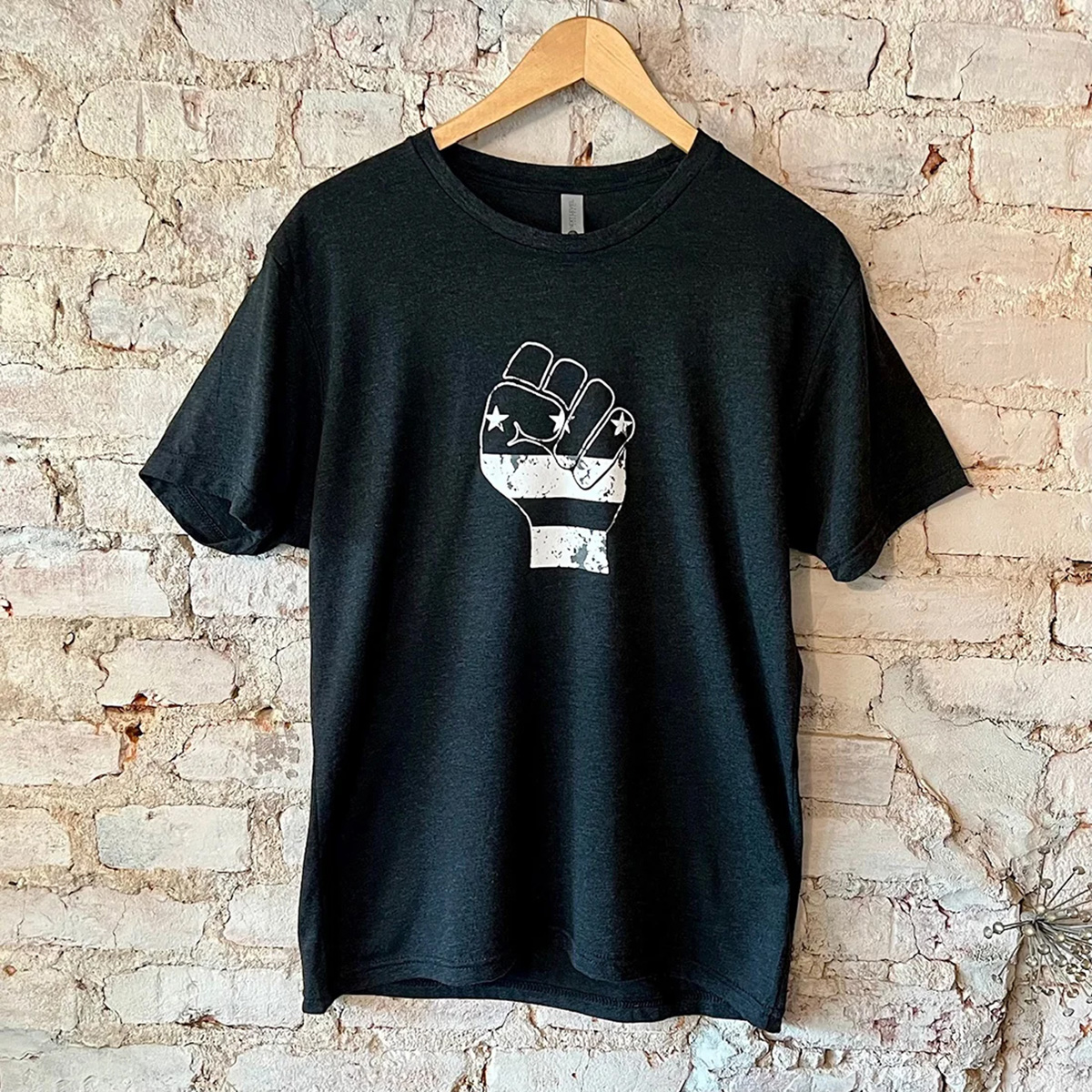
To keep it c(g)lassy: The Glass Ball earrings from Blue Moon Aquarius. Gifting can rarely go wrong when it comes to a new pair of earrings. The unique statement earrings — made of polymer clay, glass, and 18k gold plating over surgical steel — are hand cut, sanded and assembled in Washington, meaning each set is unique. Blue Moon Aquarius, a local brand, is known for its small batch jewelry and home decor designed with clay materials. Available in oxblood, hunter green, lavender, and bluestone color palettes, these earrings are available for purchase on Blue Moon Aquarius’ website and at the DowntownDC Holiday Market. ($48)
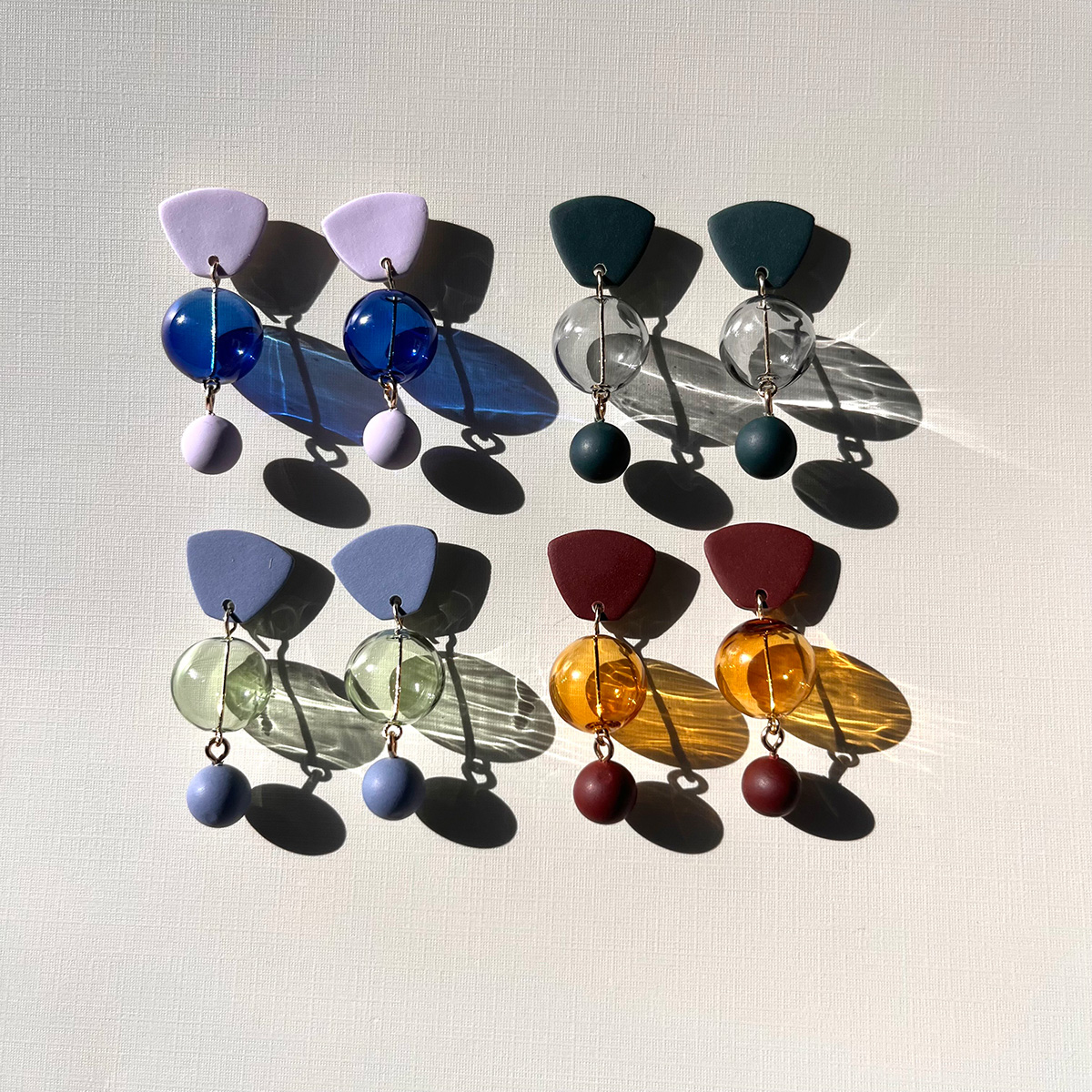
To elevate a holiday tea or charcuterie party: The Honey Flight: Tea Lover’s Selection from BannerBee. This local honey company presents the ideal gift to make cozying up with a cup of tea slightly more special. The Honey Flight contains three types of raw wildflower honey infused with fair trade Ugandan vanilla bean, chai spices, and locally sourced lemon thyme herb. The gift is also an opportunity to uplift a family company based in the Mid-Atlantic that offers all-natural, sustainable products. The flight is available online, at the DowntownDC Holiday Market or at the Arlington Courthouse and Dupont Farmers’ Markets. ($36)
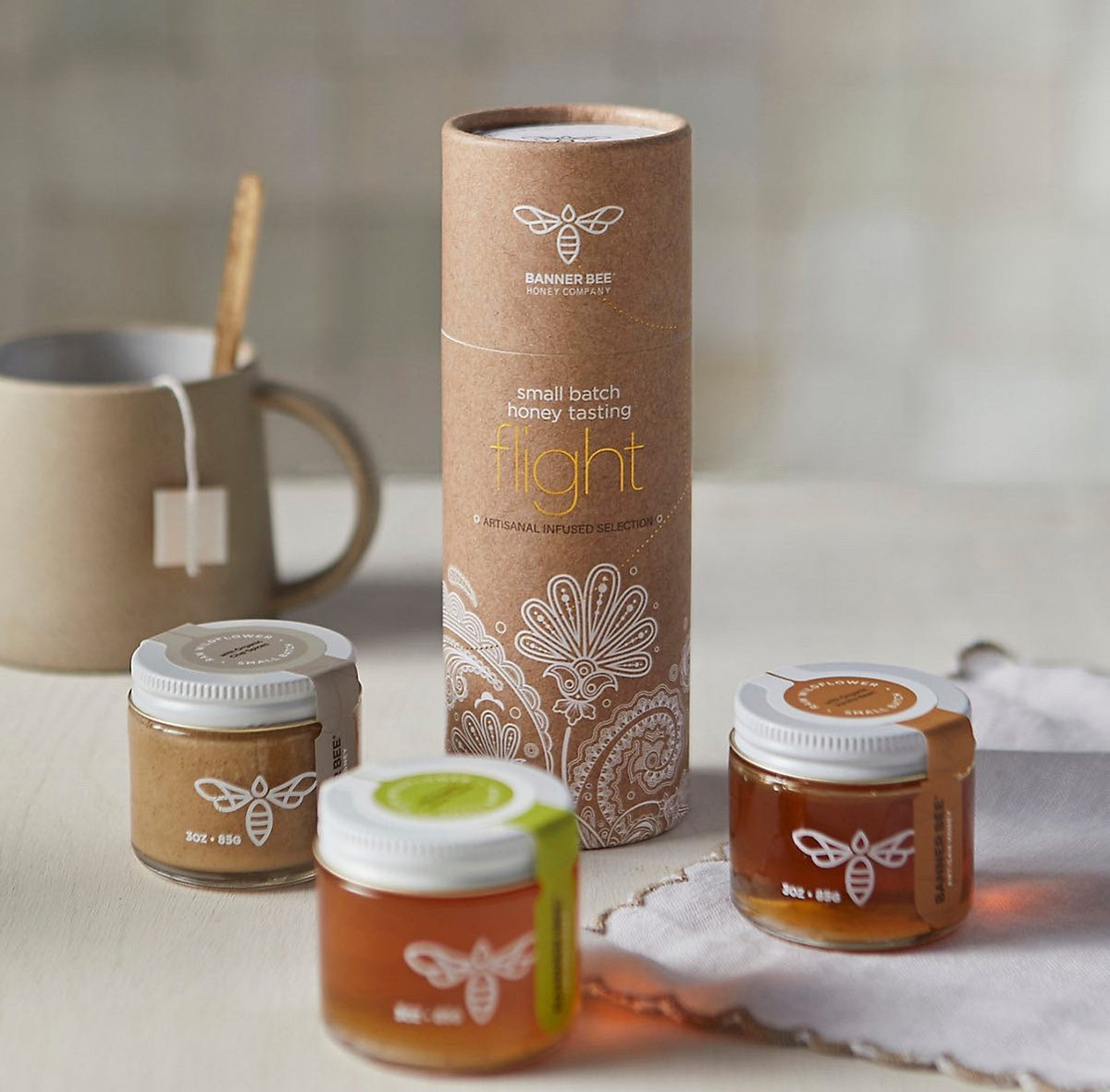
For Baltimore shoppers: If you’re in Charm City, don’t miss Balston Mercantile, opened by a gay couple in June. Their gorgeous shop in the Hampden neighborhood offers an array of unique, upscale finds, from barware and artwork to cookbooks and home decor and more. (849 W. 36th St.)

